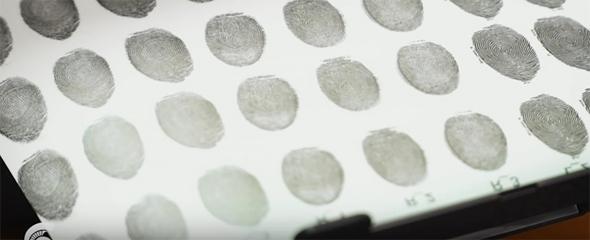A severed finger won’t unlock an iPhone, but that doesn’t mean fingerprint sensors are foolproof. Researchers at Michigan State University want you to know that it doesn’t take fancy equipment or a lot of time to create fingerprint replicas that can trick scanners and unlock mobile devices. All they needed was an inkjet printer, conductive ink, and regular paper.
Kai Cao and Anil Jain from the Biometrics Research Group made a video showing how easy it is to print conductive fingerprints from scans. “The worry is that hackers could use similar methods to steal personal identities and other vital information,” they wrote.
If you think your fingerprints aren’t going anywhere because they’re, well, attached to your hand, consider the screens, elevator buttons, and other surfaces that you touch every day. And even if you don’t think you’ll ever be personally targeted by a hacker, large-scale data breaches are another way that fingerprints can get out. For example, in the Office of Personnel Management hack last year, 5.6 million federal employees had their fingerprint data stolen. Who knows what will happen to that data trove now? It might never surface again, it might be used for a targeted attack, or it could leak onto the dark Web and become publicly available. Fingerprints don’t change, so once data about them is compromised, there’s a risk for life.
The ongoing fight between Apple and the FBI over unlocking an iPhone highlights the significance of device locks. If you want to protect a data storage device you need to secure it. Fingerprint scanners seem futuristic and smart, but there’s something to be said for the humble passcode. Then again, the Michigan State researchers say they’re working to create safeguards for fingerprint sensors so there may be hope yet.
